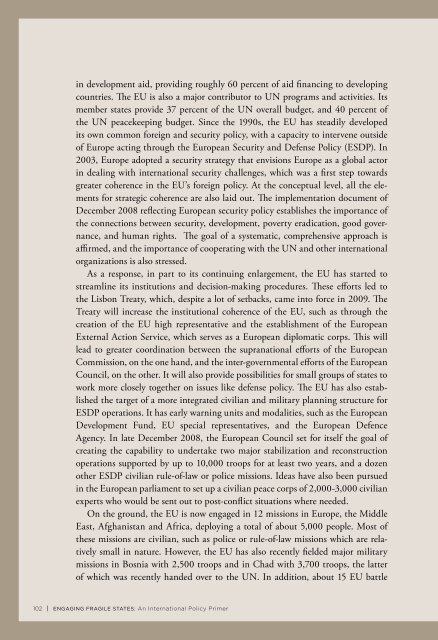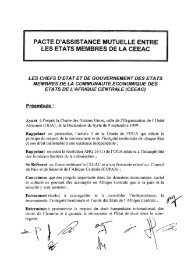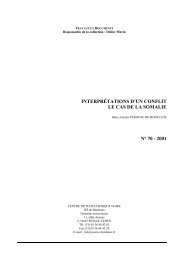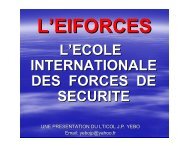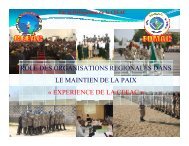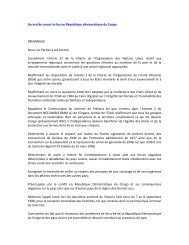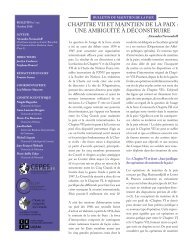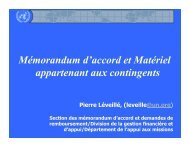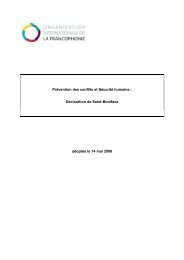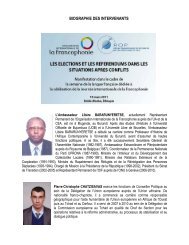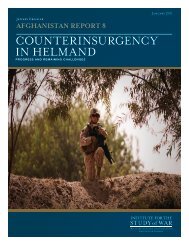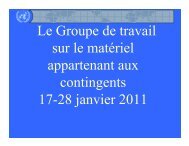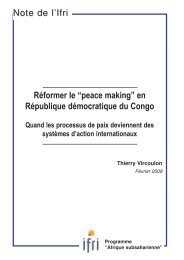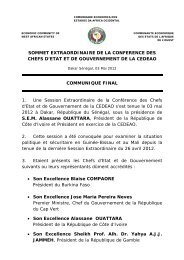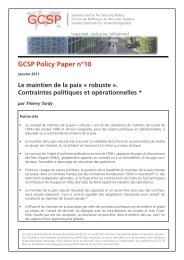engaging fragile states - Woodrow Wilson International Center for ...
engaging fragile states - Woodrow Wilson International Center for ...
engaging fragile states - Woodrow Wilson International Center for ...
Create successful ePaper yourself
Turn your PDF publications into a flip-book with our unique Google optimized e-Paper software.
in development aid, providing roughly 60 percent of aid financing to developing<br />
countries. The EU is also a major contributor to UN programs and activities. Its<br />
member <strong>states</strong> provide 37 percent of the UN overall budget, and 40 percent of<br />
the UN peacekeeping budget. Since the 1990s, the EU has steadily developed<br />
its own common <strong>for</strong>eign and security policy, with a capacity to intervene outside<br />
of Europe acting through the European Security and Defense Policy (ESDP). In<br />
2003, Europe adopted a security strategy that envisions Europe as a global actor<br />
in dealing with international security challenges, which was a first step towards<br />
greater coherence in the EU’s <strong>for</strong>eign policy. At the conceptual level, all the elements<br />
<strong>for</strong> strategic coherence are also laid out. The implementation document of<br />
December 2008 reflecting European security policy establishes the importance of<br />
the connections between security, development, poverty eradication, good governance,<br />
and human rights. The goal of a systematic, comprehensive approach is<br />
affirmed, and the importance of cooperating with the UN and other international<br />
organizations is also stressed.<br />
As a response, in part to its continuing enlargement, the EU has started to<br />
streamline its institutions and decision-making procedures. These ef<strong>for</strong>ts led to<br />
the Lisbon Treaty, which, despite a lot of setbacks, came into <strong>for</strong>ce in 2009. The<br />
Treaty will increase the institutional coherence of the EU, such as through the<br />
creation of the EU high representative and the establishment of the European<br />
External Action Service, which serves as a European diplomatic corps. This will<br />
lead to greater coordination between the supranational ef<strong>for</strong>ts of the European<br />
Commission, on the one hand, and the inter-governmental ef<strong>for</strong>ts of the European<br />
Council, on the other. It will also provide possibilities <strong>for</strong> small groups of <strong>states</strong> to<br />
work more closely together on issues like defense policy. The EU has also established<br />
the target of a more integrated civilian and military planning structure <strong>for</strong><br />
ESDP operations. It has early warning units and modalities, such as the European<br />
Development Fund, EU special representatives, and the European Defence<br />
Agency. In late December 2008, the European Council set <strong>for</strong> itself the goal of<br />
creating the capability to undertake two major stabilization and reconstruction<br />
operations supported by up to 10,000 troops <strong>for</strong> at least two years, and a dozen<br />
other ESDP civilian rule-of-law or police missions. Ideas have also been pursued<br />
in the European parliament to set up a civilian peace corps of 2,000-3,000 civilian<br />
experts who would be sent out to post-conflict situations where needed.<br />
On the ground, the EU is now engaged in 12 missions in Europe, the Middle<br />
East, Afghanistan and Africa, deploying a total of about 5,000 people. Most of<br />
these missions are civilian, such as police or rule-of-law missions which are relatively<br />
small in nature. However, the EU has also recently fielded major military<br />
missions in Bosnia with 2,500 troops and in Chad with 3,700 troops, the latter<br />
of which was recently handed over to the UN. In addition, about 15 EU battle<br />
102 | Engaging Fragile States: An <strong>International</strong> Policy Primer


